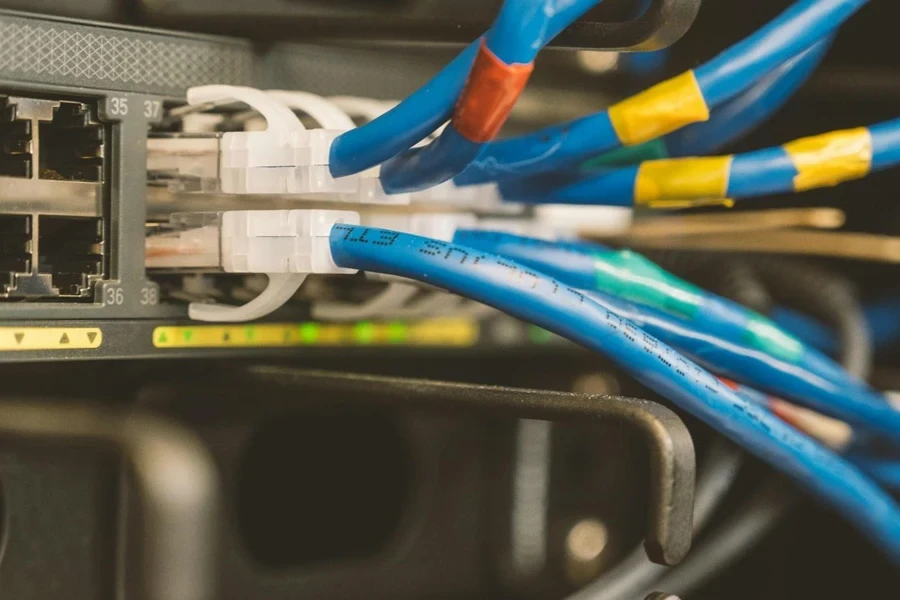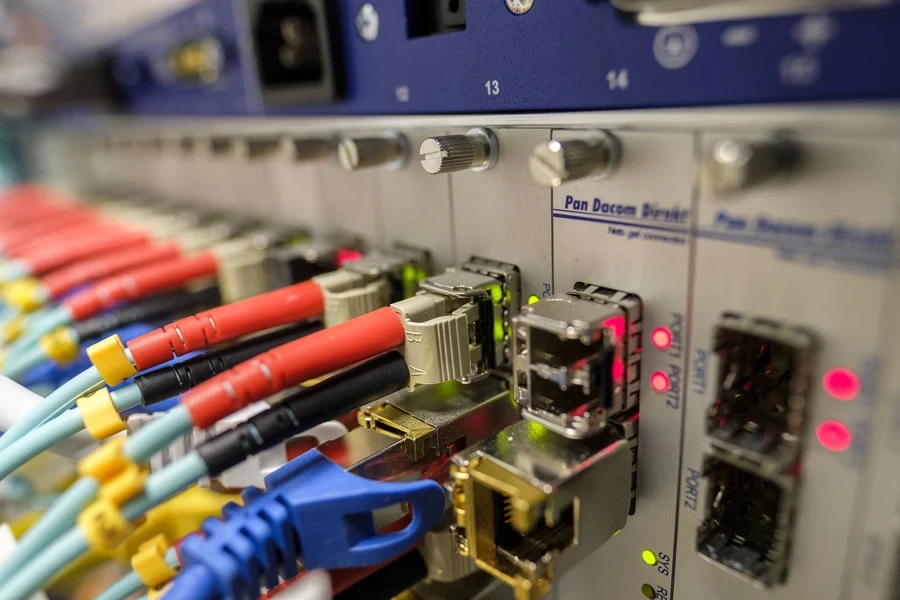DOSSIER
DIGITAL LIFE

Network Card Market: Trends, Technological Innovations, and Models
In today’s world, dominated by advancements in cloud technology and high-speed data transmission needs, users rely heavily on network cards for smooth connectivity and reliable access to networks. With technology evolving rapidly, understanding the latest trends and innovations in the network card market is essential for professional buyers looking to enhance their IT infrastructure.
This article takes a detailed look at what is driving the market’s expansion, highlighting key technological advancements and high-performance products that can help guide purchasing choices in an ever-changing landscape where businesses rely heavily on cutting-edge networking capabilities.
Market Scale and Growth...The NIC market is expected to grow from 2024 to 2028, with a projected increase of $3.37 billion. This growth is in line with a compound annual growth rate of 5.25%, fueled by the growing desire for the Internet and the widespread use of cloud computing and virtualization technologies. Furthermore, Technavio reports that the upward trajectory of the market is driven by a growing demand for fast and reliable network connections to facilitate digital advancements across multiple industries.
Key innovations in network card technology and design:
-Advancements in high-speed data transfer...The advancement of Ethernet cards is characterized by the introduction of transfer speeds of 2.5 Gbps and even 10 Gbps. They are enabled by the incorporation of PCIe (Peripheral Component Interconnect Express) to provide improved bandwidth and lower latency.
Today, network adapters are leveraging Gigabit Ethernet technology, which allows seamless adaptation to varying speeds such as 10 Mbps, 100 Mbps, 1 Gbps and 2.5 Gbps, offering flexibility to meet network conditions and needs.
Edge physical layers (PHYs) are components used to minimize signal degradation over long distances and maintain high-speed data transmission under challenging conditions.
- Enhanced security through hardware innovations...With the rise of cyber threats comes the enhancement of network cards with cryptographic engines and trusted platform modules (TPMs). These features ensure secure boot procedures and protect sensitive information in transit. Network interface cards (NICs) have built-in accelerators that smoothly manage encryption and decryption operations without compromising system efficiency.
Secure enclave technologies are now being integrated into network interface card (NIC) configurations to separate sensitive operations from the rest of the system and prevent tampering or unauthorized entry attempts, which is crucial in cloud and data center settings.
-Optimizations for virtualization and cloud environments...The advancement of cloud computing and virtualization has led to enhanced network cards to accommodate Single Root I/O Virtualization (SR-I/O), allowing virtual machines (VMs) to effectively utilize a single physical NIC. This improves network efficiency and reduces overhead costs. These specialized cards come with adaptive interrupt coalescing and receive-side scaling (RSS), which helps distribute the network traffic processing load across multiple CPU cores, thereby easing congestion in virtualized setups.
In addition, they are also incorporating hardware offload features such as TCP segmentation offload (TS0) and large receive offload (LR0) to move processing tasks from the CPU to the NIC to further improve performance in cloud computing centers.
-BYOD-driven connectivity flexibility...To keep up with the growing popularity of BYOD (Bring Your Device), network interface cards (NICs) are commonly equipped with multiple ports and the ability to connect to wired and wireless networks effortlessly for convenient switching based on the device in use.
Wake on LAN (WoL) such as Auto-MDIX (Automatic Medium Dependent Interface Crossover) are now common features. They enable remote access and automatic cable recognition to simplify network administration tasks in a variety of settings where users rely heavily on consistent connectivity across multiple devices via Ethernet or wireless connections such as Wi-Fi or other protocols.

Top-selling models that are setting market trends:
-StarTech Ethernet Card: Versatility with Cross-Platform Compatibility
The StarTech Ethernet card has been praised for its ability to work smoothly across multiple operating systems, such as Windows and macOS, as well as Linux systems, effortlessly without any compatibility issues. This is due to its PCIe interface that allows it to deliver blazing-fast gigabit speeds, reaching up to 1000 Mbps.
The card’s ability to connect via two channels and automatically adjust settings to improve performance are features that make it a popular choice for users who require connectivity across multiple operating systems. StarTech’s dedication to ensuring high-level compatibility and performance has established this model as a leader in configurations with a variety of hardware and software configurations.
-EDUP Ethernet Card: High-Speed Options for Professional Workloads...The EDUP Ethernet card is built for demanding environments, as it can reach speeds of up to 2.5 Gbps. With its multi-gigabit capability option included in this card’s design, there is a PCIe x1 interface for broad compatibility with modern PCs and servers. It is known for its ability to work with different operating systems such as Windows and Linux, making it adaptable for professional setups. The card comes with a low profile and standard brackets, allowing flexibility during installation. Additionally, auto MDI/MDIX support ensures ease of use by automatically detecting the correct cable configuration. The EDUP Ethernet card is highly regarded among professionals who deal with large data transfers and complex network operations due to its performance and versatility.
-TRENDnet Ethernet Card: High Performance Under Heavy Loads...TRENDnets Ethernet card stands out as a high performer with its ability to support speeds of up to 2 gigabits per second using FIFO buffer technology that effectively minimizes memory transfer overheads. The card is ideal for setups that require reliable and fast data transfers during intense network activities, such as enterprise networks or data centers.
The card also includes auto-negotiation and auto MDI-X functionality to ensure high-level performance, with no manual configuration required. Its ability to maintain high speeds during intense network activity has made it a popular choice for performance-driven businesses.
-X-MEDIA Ethernet Card: Affordable with High Performance...Are you looking for a budget-friendly option that doesn’t sacrifice performance? The X-MEDIA Ethernet Card provides high-speed internet at an affordable price. It has 10/100/1000 Mbps capabilities and is compatible with Windows and Linux systems to easily fit into various home or office network setups. This is thanks to its convenient plug-and-play feature and automatic MDI/MDIX support. The X-MEDIA card is preferred by budget-conscious buyers looking for reliable network performance capabilities.
-ULANSeN Ethernet Card: Cutting-edge speeds for advanced applications...The ULANSeN Ethernet Card offers speeds of up to 2.5 Gbps, making it the best choice for advanced networking requirements. With PCIe compatibility and support for Wake on LAN, it is well-suited for setups that demand high data transfer rates and remote management capabilities. Auto-negotiation and full duplex mode ensure the best performance, making it ideal for tasks such as video editing, large-scale data transfers, and cloud computing applications. The ULANSe card’s blend of high-speed performance and sophisticated features positions it as a major player in the market.
Influencing Market Trends and Technological Advancements...The best-selling models in the market are favored for their features and for shaping the overall direction of NIC industry trends. The shift toward higher-speed connections, broader cross-platform compatibility, and advanced security features reflects the growing demands of network configurations. As these models set benchmarks, they are pushing manufacturers to push the boundaries by improving speed levels, data security measures, and seamless integration capabilities across platforms. Advancements in this field are influencing the direction of the NIC market to meet the growing demands of businesses and professionals.
Conclusion...The network card market is seeing a surge due to advancements in technology and the growing need for fast, secure connectivity options that are also flexible. With improvements in data transfer rates, security measures, and enhanced compatibility features, the market is poised for growth, especially as businesses rely more on network configurations to power their digital activities. As these developments unfold, network cards will continue to play a role in powering the wave of enterprise networking capabilities.
mundophone
No comments:
Post a Comment